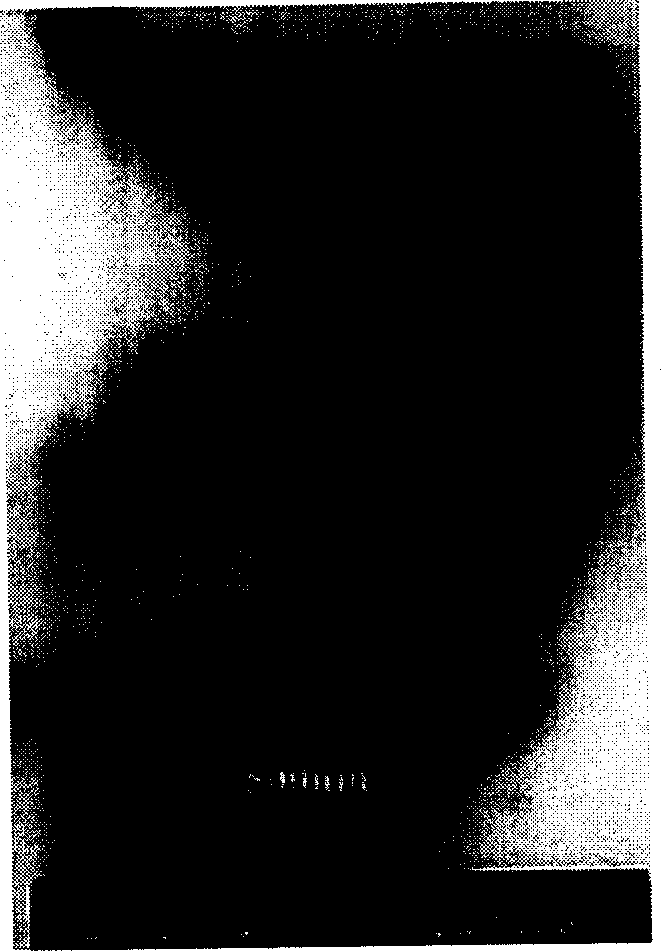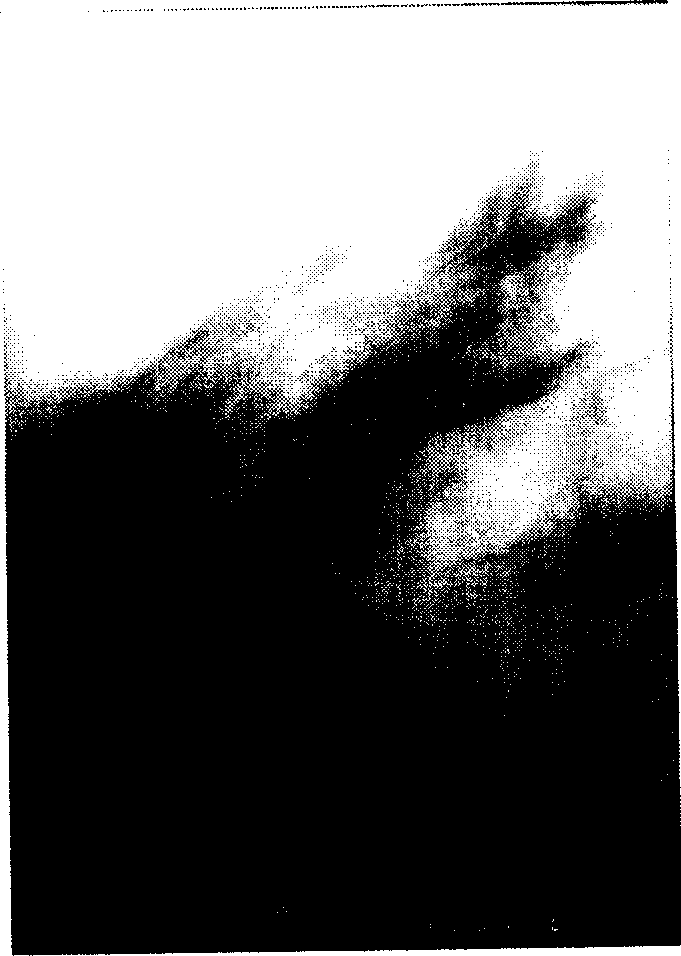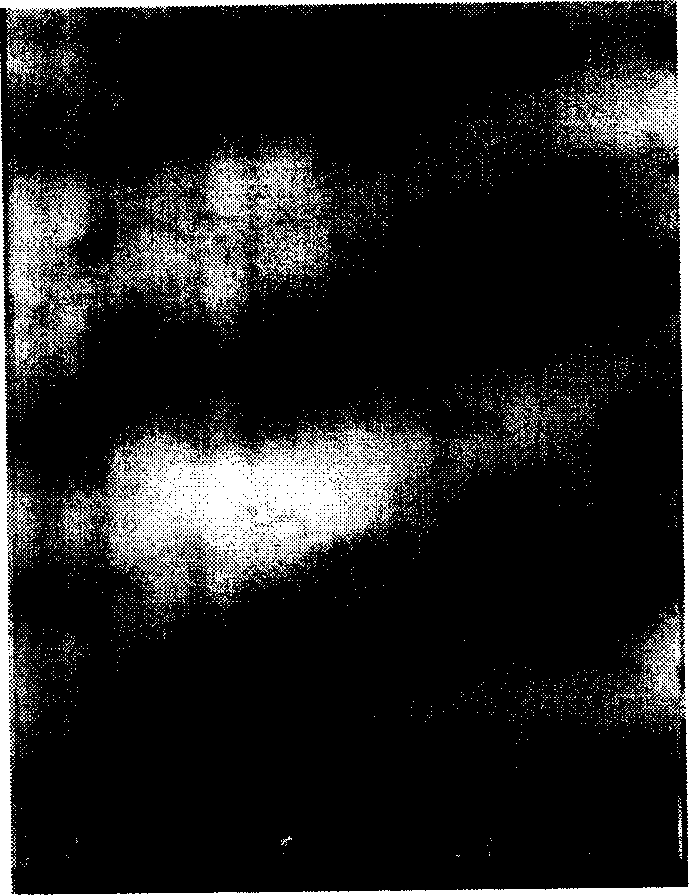Process for preparing rubber and clay nano composites by using pre-expanded organic clay
A nanocomposite material and organoclay technology, which is applied in the field of preparation of rubber and clay nanocomposite materials, can solve the problems of inability to prepare butyl rubber, complicated processing procedures, difficulty in finding solvents, etc., achieves long preparation cycle, meets performance requirements, Inexpensive effect
- Summary
- Abstract
- Description
- Claims
- Application Information
AI Technical Summary
Problems solved by technology
Method used
Image
Examples
Embodiment 1
[0057] Organoclay (organic sodium bentonite) was mixed with oleic acid in a mass ratio of 1:1, stirred on a mixer for 30 minutes to obtain pre-expanded organoclay, and 100 parts of butyl rubber and 5 parts of pre-expanded organoclay were smelted on two rolls. Mixing on the machine for about 30 minutes, then add the following various ingredients in three steps, the first step adds 5 parts of zinc oxide, 2 parts of stearic acid, the second step adds 2-thiol benzothiazole (accelerator M) 0.5 part, 1.0 part of tetramethylthiuram disulfide (accelerator TMTD), 1.0 part of N-phenyl-α-naphthylamine (anti-aging agent A), 1.8 part of sulfur was added in the third step, after mixing for 20 minutes The rubber material is rolled down to obtain a butyl rubber and clay nanocomposite material. Then measure its positive vulcanization time (T 90 ), vulcanized on a flat vulcanizer according to the positive vulcanization time, and prepared samples. Transmission electron microscopy (TEM) picture...
Embodiment 2
[0061] The organic solvent was changed to toluene, and the remaining operation steps were the same as those in Example 1 to obtain butyl rubber / clay nanocomposite. The mechanical properties of the materials are listed in Table 1, transmission electron microscopy pictures TEM (such as figure 2 shown), X-ray diffraction pattern (XRD) (e.g. Image 6 shown). from figure 2 It can be seen from the TEM photo of the pre-expanded organoclay treated with toluene that the dispersion structure of the prepared nanocomposites is finer, indicating that the organoclay has good dispersibility in toluene, which is conducive to the insertion of rubber macromolecular chains. It is an intercalated butyl rubber / clay nanocomposite. Image 6 The interlayer spacing of the pre-expanded organoclay corresponding to curve 1 increases from 4.2 nm to 5.1 nm, and the peak value of the nanocomposite corresponding to curve 2 is 6.5 nm, indicating that the rubber macromolecular chain is well inserted betwe...
Embodiment 3
[0063] The organic solvent was changed to n-butanol, and the remaining operation steps were the same as those in Example 1 to obtain butyl rubber / clay nanocomposite. The mechanical properties of the materials are listed in Table 1, and the transmission electron microscope photographs TEM are as follows. image 3 , the X-ray diffraction pattern (XRD) is shown as Figure 7 shown. from image 3 It can be seen from the TEM photo of the butyl rubber / clay nanocomposites prepared with n-butanol-treated pre-expanded organoclay that the dispersed phase structure is an exfoliated structure, indicating that the organoclay has been exfoliated into a single layer in n-butanol. . Thus, pre-expanded organoclay treated with n-butanol results in exfoliated nanocomposites.
[0064] As can be seen from Table 1, the butyl rubber / clay nanocomposite prepared by the pre-expanded organoclay treated with n-butanol in the present invention has the hardness, 100% constant elongation stress, 300% const...
PUM
 Login to View More
Login to View More Abstract
Description
Claims
Application Information
 Login to View More
Login to View More - R&D
- Intellectual Property
- Life Sciences
- Materials
- Tech Scout
- Unparalleled Data Quality
- Higher Quality Content
- 60% Fewer Hallucinations
Browse by: Latest US Patents, China's latest patents, Technical Efficacy Thesaurus, Application Domain, Technology Topic, Popular Technical Reports.
© 2025 PatSnap. All rights reserved.Legal|Privacy policy|Modern Slavery Act Transparency Statement|Sitemap|About US| Contact US: help@patsnap.com



